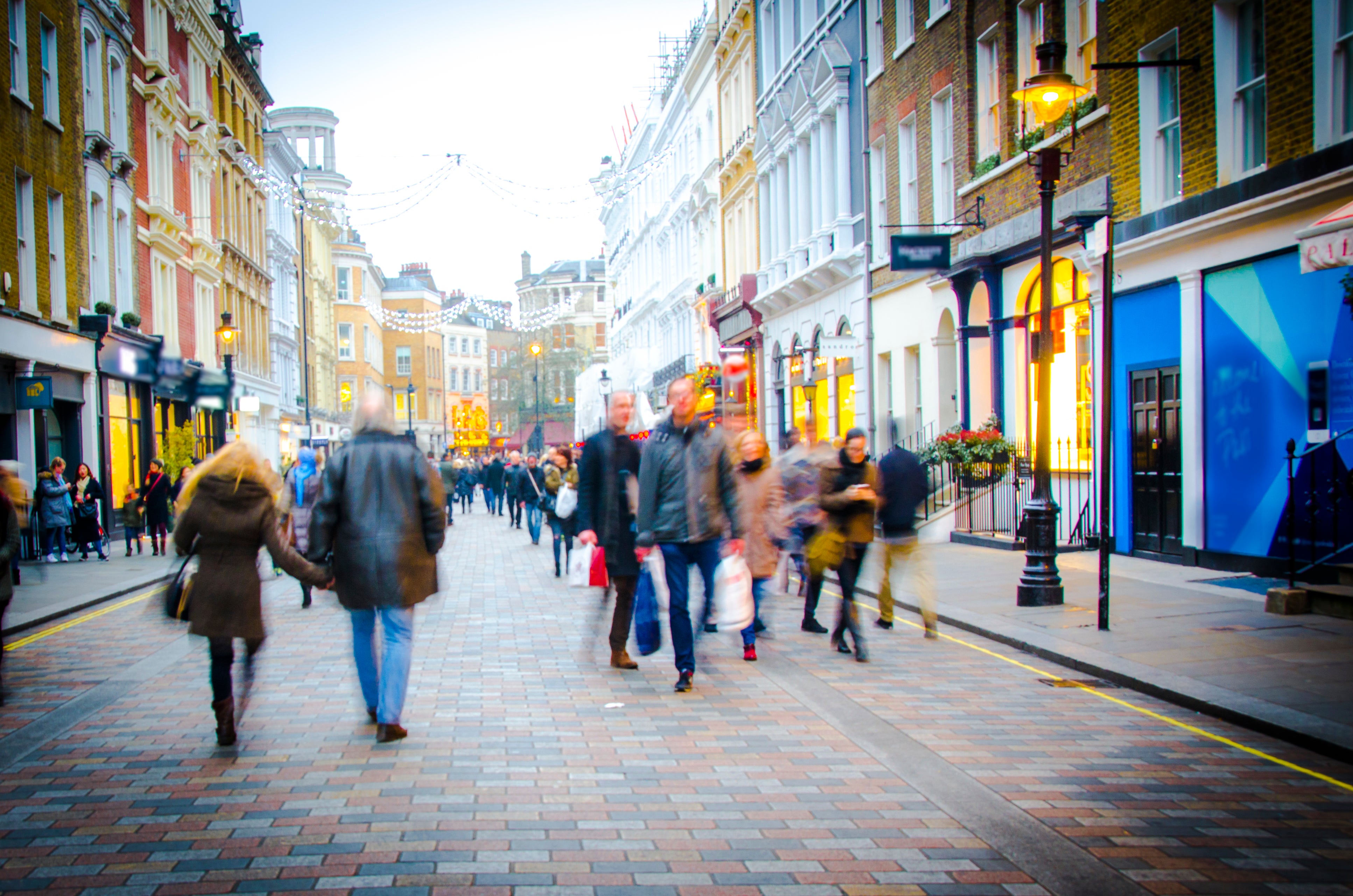Like most women, I didn’t want to report what had happened to me at first. I was embarrassed, ashamed, and fairly certain it was not worth the fuss of escalation. After all, I was probably being melodramatic. I’d emerged free from any signs of lasting damage. And far worse things had happened to other people. Maybe I’d overreacted.
This was the stream of consciousness that ran through my head for several days in the immediate aftermath of the incident. All of those thoughts told me to do the same thing: say nothing, get over it, and find a way to move on. But that’s not what I did. And because of that, a man was convicted of the criminal charge he deserved. And in what is an all too rare result for victims of violence against women of any kind, my feelings of violation were vindicated by a court of law.
Last year, a man walked into my changing room while I was trying on dresses at Selfridges. I wrote about what happened at the time, detailing how I’d initially clocked him staring at me on the shop floor while I was standing in front of the changing room curtain, checking how one of the dresses looked in the mirror. It freaked me out, but I thought nothing of it until a few minutes later, when the same man opened the curtain to my changing room as I was trying on another dress. Thankfully, I was mostly clothed and facing him as I had been about to exit and ask a shop assistant to help me tie the dress up from the back. Had he entered seconds earlier, I would’ve been almost naked, facing away from him, and in an arguably far more vulnerable position.
Shaken, horrified, and generally disturbed, I left the store and swiftly burst into tears. But this was almost as much to do with the incident itself as the response to it, all of which made me feel like this was something I was supposed to simply brush off. One shop assistant merely shrugged when I told her. Another called security, who swiftly arrived and took a few details from me. Later, I rang customer services, who were equally unhelpful. A representative of the luxury department store said in a statement at the time: “The safety and well-being of our customers and team members is our utmost priority at Selfridges, and we do not tolerate any unacceptable or threatening behaviours towards anyone. We are working with the police to support their investigation into this incident and remain actively committed to fostering a safe and welcoming environment within our stores.”
After I reported it to the police, two officers came to my house to take my statement. Still, though, since the man hadn’t been apprehended in the store and nobody knew his identity, that would’ve probably been the end of things. Except it wasn’t. I reported what happened to my contact at Hurr, the fashion rental service that had arranged for me to visit Selfridges that day to pick up a dress for a Christmas party. “Glad you found a dress!” the contact replied before adding that they were “sorry to hear” about what had happened and looped me in with the floor manager at the store. Because of this, my claim was escalated, and I eventually received a long email from Archana Ramaswamy, store director at Selfridges at the time, who ended up coming to meet me at a cafe near my house to apologise in person.
Violence is a pattern of escalation. How many times do we need to be reminded of that?
It was the first time anyone associated with Selfridges had made me feel like they understood the gravity of what had happened. That even though I was ostensibly unharmed, this man could’ve seen my near-naked body and, had I been facing the other way, who knows what he would’ve tried to do. It was because of Archana that the man was caught; she spotted him in the store again a week later, having recognised him from the CCTV footage. Neither one of us could believe he’d returned: was he planning to walk in on someone else’s changing room?
Thankfully, he never had the opportunity. Security quickly apprehended him, and he was taken in for police questioning. I was told that he’d apologised and had been having a hard time lately. Less than a year later, he was convicted at Westminster Magistrates’ Court of observing a person doing a private act. He’d pleaded guilty. His sentence included a community order, a rehabilitation activity requirement, and a year-long ban from Selfridges. He was also required to register with the police in accordance with the Sexual Offences Act 2003 for five years, meaning he’d be a registered sex offender for half a decade. I would also be awarded compensation of £150. He is currently appealing the sentence.
It was a bittersweet moment when my case officer relayed all of this to me. Of course, I was thrilled to learn that this man would face justice for his actions, and relieved to know that I hadn’t overreacted or made a big deal out of nothing. In actual fact, I’d reacted in exactly the way the law tells us we ought to, and made an appropriately sized deal out of something criminal, and hopefully also prevented this man from causing any further harm to others. All this felt good. What felt less so was the rage that accompanied it.

I was angry that nobody seemed to be monitoring a changing area on a women’s floor. And that no one thought to raise alarm bells when they noticed a man heading that way. I was angry that the shop floor assistants didn’t seem to know how to handle the situation, and that the man was able to leave the store that day without being apprehended. I was angry that, had it not been for Archana spotting him herself, he might’ve got away unscathed. I also felt angry that the customer service assistant I spoke to on the phone when I first reported it ended our conversation by thanking me for coming to Selfridges. And that the representative for Hurr told me she was “sorry to hear” about what had happened to me, but didn’t follow up, nor did anyone else at Hurr. And I was angry that I felt as if nobody seemed to understand the gravity of any of this.
According to the 2022 victims’ survey carried out by the then victims commissioner, Baroness Newlove, 91 per cent of women are not confident they will receive justice by reporting a crime against them. Almost four in five women (79 per cent) did not have confidence in the police’s ability to thoroughly investigate crimes against them, and after their experience of reporting a crime to the police, 59 per cent were unsure about or unwilling to report again. Combine this with several other figures, and it paints a grim picture, like how, according to the Crime Survey for England and Wales (CSEW) for the years ending March 2017 and March 2020 combined, fewer than one in six victims (16 per cent) of sexual assault by rape or penetration (including attempts) had reported the assault to the police. Meanwhile, ONS data has found that for those victims who told someone about the abuse, but did not report it to the police, the most common reasons given were embarrassment (40 per cent), they did not think the police could help (38 per cent), and they thought it would be humiliating (34 per cent). A quarter of victims also thought the police would not believe them.
Given the way I felt after leaving Selfridges that day, I had every reason to feel like I shouldn’t have reported what had happened to me. The only reason I did was because, as someone who writes fairly regularly about violence against women, I am familiar enough with the aforementioned figures to know the importance of taking my own experiences of violation seriously, even when other people might make you feel as if you shouldn’t. I also know that sexual predators exhibit patterns, whereby one so-called “small” crime, such as the one I experienced, might lead to another, far more significant one.
Take Wayne Couzens, the Met Police officer who was accused of indecent exposure in 2015, six years before he would go on to murder 33-year-old Sarah Everard. In 2023, a Met PC was also found guilty of gross misconduct after carrying out a “lamentably poor” investigation into Couzens following two incidents of flashing at a McDonald’s in Kent hours before he would go on to kidnap and murder Everard. During the trial, Paul Ozin KC, for the Met Police, said that after the incidents were reported to the force, they had been recorded as “less urgent” than other issues they had to deal with.

Violence is a pattern of escalation. How many times do we need to be reminded of that? I don’t know the answer. Nor do I know what the man who walked into my changing room was planning to do to me that day, or what he might’ve been capable of doing to other women had he gotten away with it. What I do know is that he carried out a crime against a woman, one that deserved to be taken seriously by everyone from the second it happened. Because how else will we deter dangerous men like this? And what might the consequences be for all of us if we don’t? And why does it so often feel like not enough of us are asking these vital questions?
A spokesperson for Selfridges said: “We have a zero-tolerance policy towards unacceptable or threatening behaviour within our stores and, following this incident, our Oxford Street store was put on high alert for the suspect, who was later successfully identified by an employee, held by in-store security and arrested by the police. We continually assess and strengthen our internal protocols and processes, keeping all our store operations under review to ensure the safety and wellbeing of our customers.”
The Independent has contacted Hurr for comment.



0 Comments